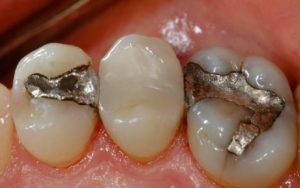 Amalgam is the most durable filling material that has been used in dental practice for more than 100 years. For the first time its use is mentioned in 1800.
Amalgam is the most durable filling material that has been used in dental practice for more than 100 years. For the first time its use is mentioned in 1800.
Dental amalgam is a special material for sealing on the basis of one or several metal alloys with mercury.
Amalgam or silver seal consists of powder for mixing, it includes: tin, silver, copper and zinc, as well as mercury, as a binder.
Contents
- Types and composition of filling amalgam
- The importance of mercury in the composition and its effect on the body
- Stages of amalgam filling procedure
- Advantages and disadvantages
- Consequences and contraindications
- Do these now or is it an outdated method of
- Removing and replacing
- How much does it costa seal?
Types and composition of the filling amalgam
There are several types of this filling material.
Depending on the shape of the particles and the size of the amalgam is divided into:
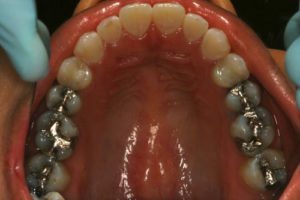
Silver amalgam seal
- traditional;
- spherical;
- mixed.
Depending on the copper content, there are:
- alloys with low copper content, they are also silver;
- with a high copper content.
Depending on zinc content:
- zinc-containing( more than 0.01% zinc in composition);
- without the presence of zinc in the composition.
Seals containing zinc in their composition easily acquire the desired shape and fill carious defects.
Functional value of amalgam alloy components:
- mercury dissolves all other metals;
- silver gives the material strength and hardness;
- tin slows down the hardening process;
- copper creates a better edge fit and increases strength.
The importance of mercury in the composition and its effect on the body
Everyone knows that mercury has some negative properties, but it is also one of the mandatory components. Mercury performs an important function in an amalgam filling. It has the property of dissolving some of the metals contained in the composition. Due to this, the mixture takes the form of the cavity of the tooth and hardens. Despite the fact that mercury is toxic, there is nothing to replace it with today.
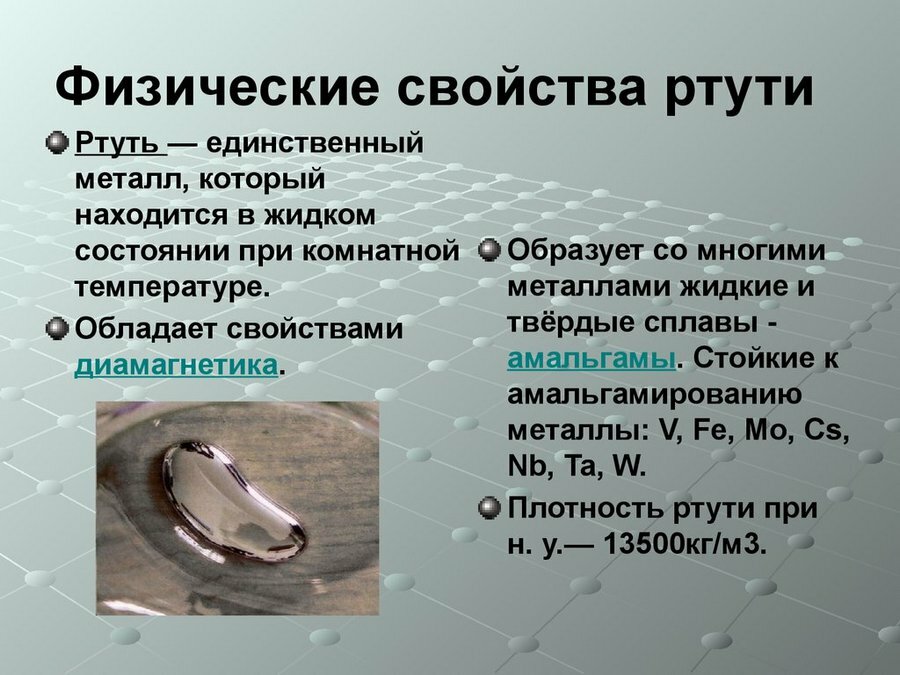
Opinions about the harmfulness of mercury seals on the human body are not unambiguous. Most doctors claim that even if the patient has 7 to 10 amalgams in the oral cavity, the amount of mercury does not exceed the permissible dose and does not adversely affect the body.
However, it is also believed that mercury can release toxic fumes and pose a threat to human health.
Studies by the American Dental Association confirm the fact that the negative effects of mercury can still occur. It is proved that in some rare cases mercury enters the human body together with saliva and negatively affects the functioning of the kidneys and causes CNS disorders. These rare phenomena are often associated with a violation of the mixing and sealing process, as well as with the mercury allergy detected in some patients.
In general, the clinical studies of the American Association of Dentists, along with the World Health Organization and the Centers for Disease Control, confirm that the composition is safe and its use is acceptable in dental practice, in addition to cases of allergy, use in children under 6 years of age and treatment of pregnant women.
Indeed, mercury has an adverse effect on the body, but only if the mixing procedure is violated or hypersensitivity to mercury. The most dangerous for humans are mercury vapor or its organic compounds. But, it is worth remembering that these fumes are minimal and even with a large number of seals, they are not capable of causing significant harm to health. Organic compounds simply do not form when using a dental amalgam alloy, so patients should not worry about this.
There is also a certain risk to the health of dentists due to work in rooms with a high content of mercury. However, such facilities are now rarely used in dental clinics, since kits for working with this material can be bought in a ready-to-use form, each of which has isolated fluids and powders.
Stages of amalgam filling procedure
The following stages of sealing are distinguished:
- Antiseptic treatment of the oral cavity by rinsing with antiseptic.
- Preparation of carious cavity with carbide boron, excision of all non-viable hard tissues.
- Creation of a cavity depending on the class of the carious defect, with obligatory presence of a bevel of enamel and retention points for mechanical fixing of a seal.
- Application of an insulating pad to protect the neurovascular bundle of the tooth.
- Mixing of amalgam and inserting it into the cavity. In modern dentistry, mixing takes place using a special device - an amalgam mixer.
- Condensation of the material, using a special tool - a snapper.
- Modeling of the alloy surface.
- After hardening - polishing and polishing the seal, which gives it an ideal smoothness and shine.
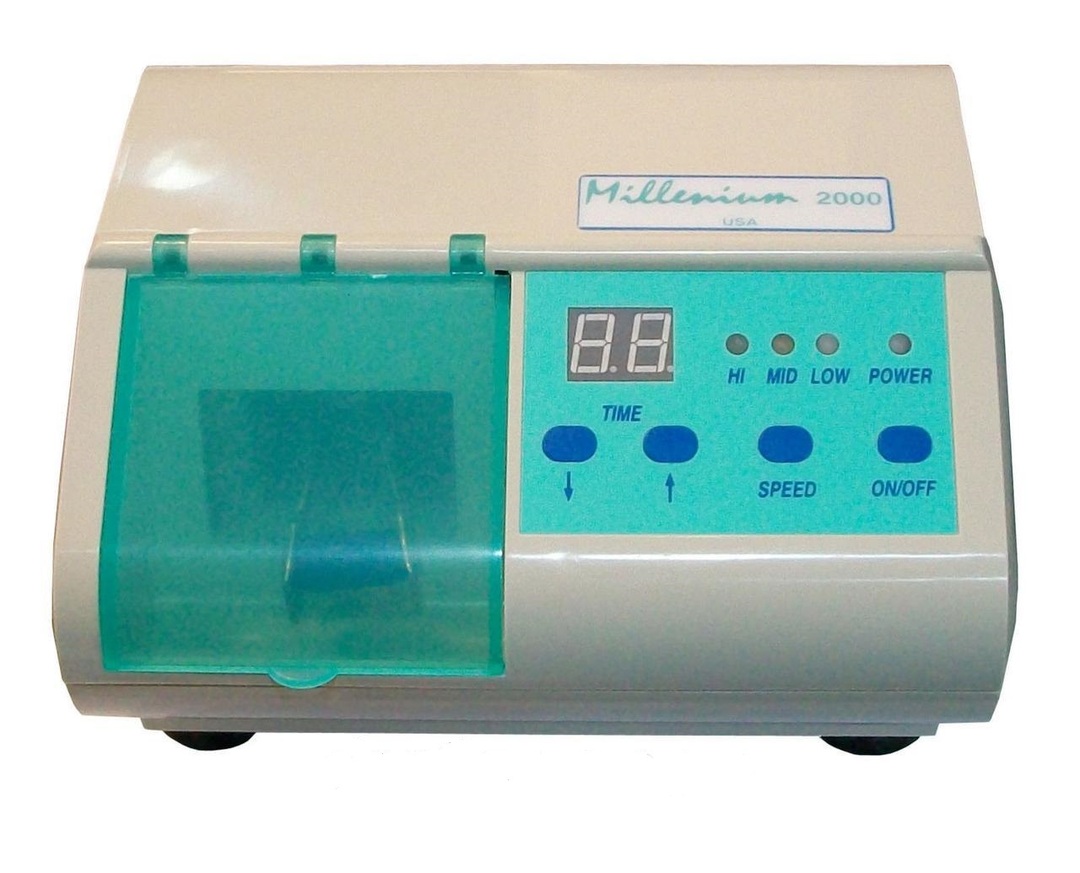
Amalgamator
Advantages and disadvantages
Amalgam, like any sealing material, has its positive and negative qualities.
Advantages of the alloy:
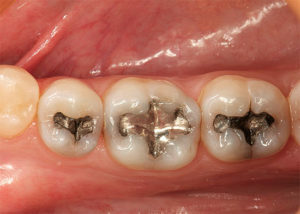
- plasticity of the material;
- strength;
- durability;
- hardness;
- is cheap;
- for easy polishing.
The main disadvantages of the amalgam:
- poor adhesion - the absence of adherence of the material to the walls of the tooth;
- need for special preparation to create a fixation;
- rather high thermal conductivity;
- presence of mercury in the composition;
- material shrinkage;
- is not aesthetically pleasing;
- no possibility of using mercury amalgams on a group of frontal teeth;
- possibility of the formation of chipped teeth in the presence of a thin wall of the cavity.
Consequences and contraindications
In some clinical cases, if the protocol for filling or mixing the amalgam composition is not adhered to, an insufficient margin fit is possible, which may lead to the development of secondary caries.
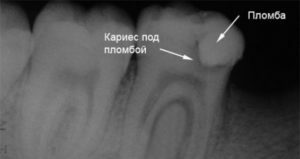
Secondary caries on the X-ray
The seal does not fit tightly to the tooth walls, forming a microscopic gap. There can get particles of food and microflora, which will lead to caries.
Amalgam sealing can cause allergic reactions, but only if there is a hypersensitivity to any component that is part of it.
This material can also be used to fill teeth in women, if there is no indication in the anamnesis of increased sensitivity to its individual components.
A separate group consists of pregnant women: they are not recommended to treat the teeth in this way, it is better to use other filling material. Mercury, which is part of the amalgam, when a pregnant woman enters the body through the placenta can have toxic effects on the fetus.
The seal of this material is quite durable, its service life is, on average, from 5 years and above. But over time it needs to be changed, like any other. Dental amalgam is also susceptible to deformities and insignificant dissolution.
Whether these seals now or this is an outdated method of
Aesthetics of amalgams has long been considered one of the main drawbacks. Given the aesthetic parameters, at present their use is not shown on the group of frontal teeth. But, despite the difference in color, on chewing teeth their use is quite acceptable. This disadvantage is also eliminated by using amalgams of recent generations, which have the property not to change the color of the tooth.
Despite the variety of filling compounds, amalgam fillings are still being placed, their demand is explained by low price and strength. In modern dentistry, their composition is still the same, but with a high copper content.
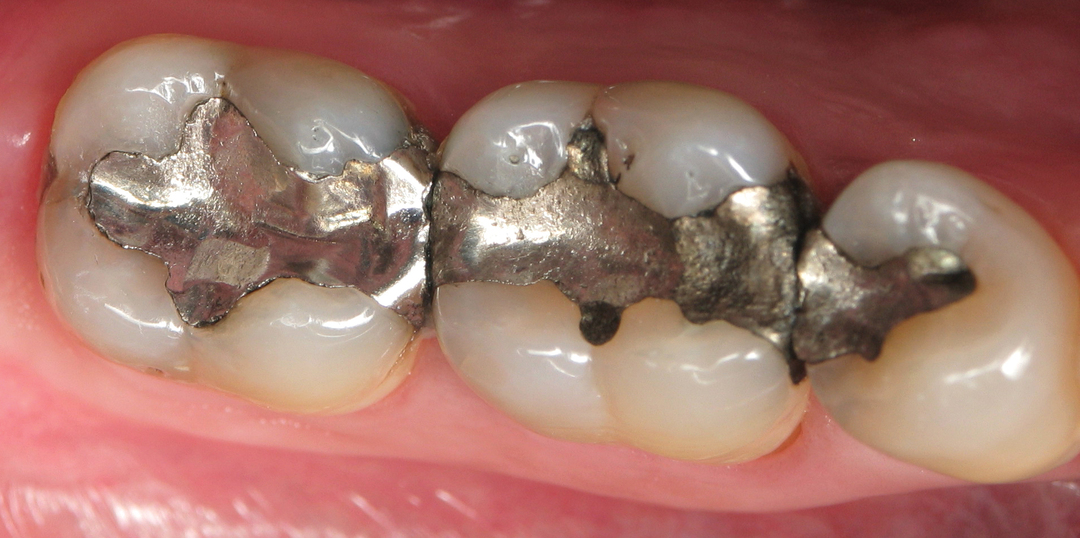
It is known that all the components of the alloy enter into a reaction, forming certain phases. Gamma-2 is a phase that is represented by a combination of tin and mercury. It is the weakest and is highly prone to corrosion, which in the future can affect the quality of the seal. In amalgams with a high content of copper component, this phase is not formed or is eliminated by correct mixing and observing the condensation regime.
Modern alternatives to this type of filling compositions are composite light reflecting materials and glass ionomer cements used for both chewing and frontal teeth.
Removal and replacement of
All seals are sooner or later worth changing, because their service life is not eternal. Amalgams, in turn, can be deformed, after a certain period of time, the marginal fit may be violated, so they are also subject to replacement by new ones.
Stages of the removal and replacement procedure:
- with carbide boron carefully and carefully, so as not to dissect excess hard tissues, remove the old seal;
- is treated with an antiseptic solution of the oral cavity and an insulating liner is applied;
- knead a new seal from an amalgam or other material and seal the tooth;
- then a new solidified alloy is ground and polished.
How much does it cost to put this seal?
The price for these seals is lower than for standard reflective composite materials. This is due to the cheapness of the metals that are included in the composition. The cost may vary depending on the clinic in which the procedure will be performed, on average - from 1500-2000 rubles.
Fillings from dental amalgam take place in the modern clinical practice of physicians, despite their almost complete replacement by composite restorations. They are widely used abroad and are one of the most popular materials for tooth filling. Their strength and durability can be used to seal the chewing group of teeth, when there is no point in focusing on the aesthetic factor.
There is no unequivocal opinion about the harmful effects of mercury in the composition, so you need to carefully weigh the pros and cons and consider all the alternatives before deciding to put a seal of amalgam.
